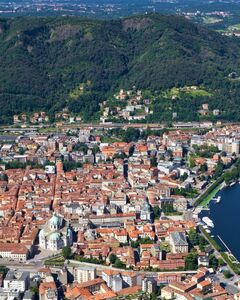
monuments near Antica Molina


First mentioned the thirteenth century, but excavations, have unearthed remains of a chapel built in eleventh and the twelfth century and rebuilt in the fifteenth century. The bell tower has been dated to the second half of the eleventh century. A...

Built in the Romanesque period, between the 11 and 12th centuries, but underwent many changes and expansions to its current appearance. It was the first parish church of Molina; over the centuries, the population of this village moved increasingly...
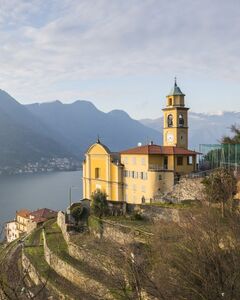
Built between 1723 and 1744 and consecrated by Bishop Albrici Pellegrini in 1764. The façade, in the Baroque style, is characterized by four pilasters and from the portal flanked by two niches and surmounted by a sundial. Above it is the date in...

Nestled in the woods of the Natural Reserve of Valle Bova, the hermitage is available to accommodate individuals, couples, priests, lay people, religious, who want to enjoy moments of silence and prayer....
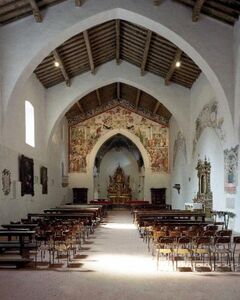
Also known as St. Anthony, as there is a preserved relic of the saint that is exposed to the congregation of the faithful every 17 January. The church was an integral part of the Franciscan convent of Santa Maria degli Angeli, founded in Crevenna at...
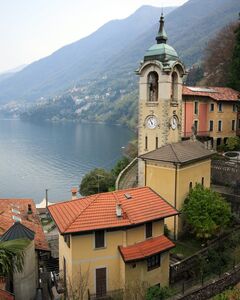
Church built between 1910 and 1931 in Palanzo, a small village above Faggeto Lario. The short hike affords great views of the lake from a a nearby park....
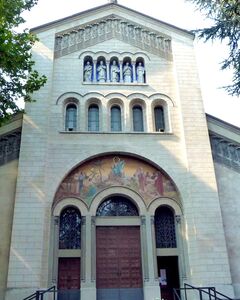
The building was first started between 1908 and 1912. Luigi Dell'Orto, mayor of Cernobbio for almost thirty years, wanted this church to solemnize his wedding with Elizabeth Lucca. After the war, the building was completed thanks to the heirs, in...

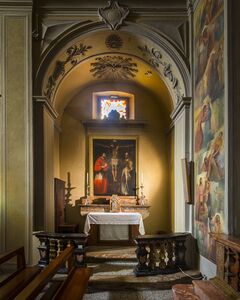
The construction of the church began in 1791 and ended in 1823 requiring the works of several architects: Clemente Isacchi, Giuseppe Pollack, Giuseppe Bovara and Simone Cantoni. The church hosts a crucifixion of 1879 by Mosè Bianchi and a painting...
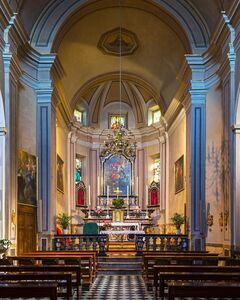
St. George, as with other holy warriors (Michael and Martin) was highly revered by the Lombards. The present church was built in the sixteenth century on the site of a former place of worship; it underwent other changes in following years,...
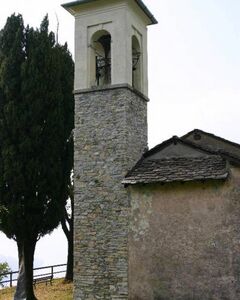
Built in the second half of the sixteenth century, this church was remodeled and expanded in later periods. Distinct for its large columns and the sixteenth round arches on the porch....

The church of Saints Peter and Paul was believed to have been founded in the eleventh century by Bishop Rainald and consecrated in 1095 by Pope Urban II, who was traveling to Clermont-Ferrand to call the first crusade. Over the centuries, the...

The Church of Saints Nazario and Celso is just a short walk away from the waters of Lake Como, near the harbor in the old town of Brienno. Some documents attest to the presence of a church since the end of the thirteenth century, the Romanesque...
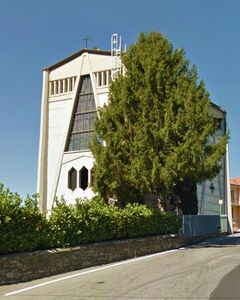
Temple of the Shrine dedicated to Our Lady of the Water Sports Prodigy. In a stormy crossing of the Adriatic, on the night of September 12, 1669, the family of Count Antonio Zancaropulo Berardo escaping from Crete, sought shelter in Venice. During...
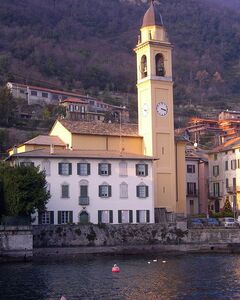
The parish church is located in the center of the country.Built in the seventeenth century, is decorated with prestigious and stucco friezes of Stefano Salterio (XVIII century) and also preserves works of painting and sculpture of the eighteenth...

Situated in the hamlet of Borgo, built on the previous Romanesque building, was the parish from the end of the fifteenth century. A single nave, has suffered repeated rearrangements. Inside frescoes Fiammenghino and an altarpiece of the sixteenth...

Urio, the part of the town that lies south of Carate, is characterized by the Romanesque bell tower of the Saints Quirico and Giulitta church that stands close to the lake. Rebuilt in 1865 from an original Romanesque church with two towers and a...
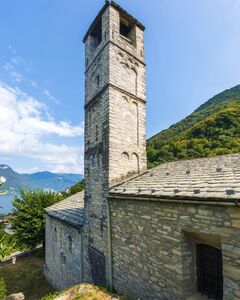

The church of San Vincenzo in Cernobbio is located in the historic part of the town, in front of Tolomeo Gallio square, a few steps away from the lake. We can date the origin of the church back to 1150, a pastoral visit of Bishop Niguarda that took...

Built on location of a church dating back to the 16th century, Santi Epimaco e Girdino was completely rebuilt in the second half of the 18th century. The original parish church is located in the lower part of town, near the lake. For this reason,...
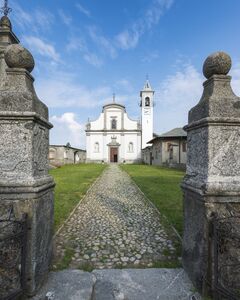
The current building was built on the site previously occupied by an older church: its construction began in 1593 and lasted until the next century (1617), when it became an independent parish. In the eighteenth century underwent a partial...
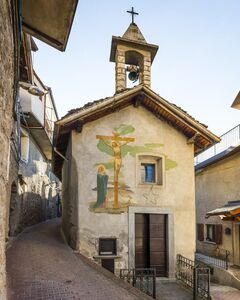
The small chapel is located in the historic center of Veleso, at the intersection of several streets. The façade is decorated with a fresco depicting the Crucifixion....
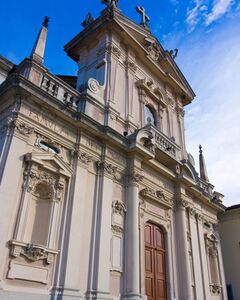
Occupying an enviable position high above the town of Como and Como branch of the lake, the church of Brunate contains a wealth of history and art. The centuries-old history of the church contains beautiful artistic works (the fifteenth-century...
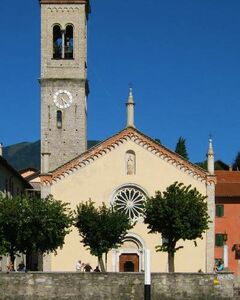
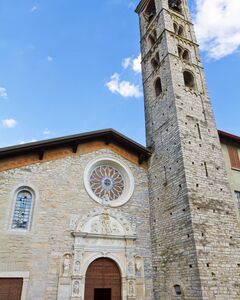
The village contains this interesting church that dates back to the 14th century. It has a fine Romanesque bell tower and a decorated Renaissance portal. An ancient chest behind the altar preserves a precious reliquary, a nail of the Holy Cross....

The church, that stands near the lake, contains interesting frescoes, and the outside is characterized by an open porch to the lake with a double lancetwindow and a tall stone bell tower. It was the church of the community, which remained...
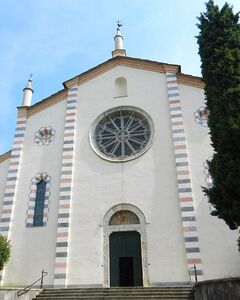
The church was founded in 1300 by two brothers Hermits of St. Augustine from Civilio, a village above Como, on land donated by a family whose members were later buried in front of the presbytery. It is the only example of Cistercian architecture...
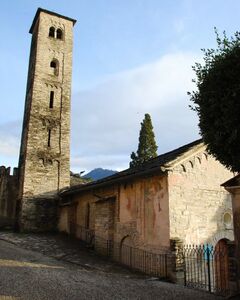
Situated in the hamlet of Vignola, along the ancient Via Regina, it preserves its ancient structure in bare stone decorated with small arches. The exterior has remains of Renaissance and late Gothic frescos. The interior is divided into two naves...

Located in the middle of the walled town, the church was built between the 11th to the end of the 13th century and was possibly the first cathedral in Como. It features a complex planimetry including three short naves, provided with women's...
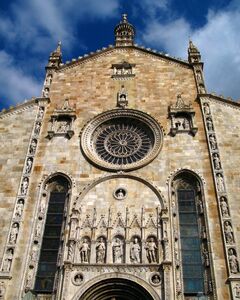
An omni-present feature of Lake Como’s skyline is the Como Cathedral with its white marble facade and imposing dome. The interior is equally spectacular boasting elaborate altar paintings, gargoyles and a magnificent dome. Como Cathedral (Italian:...
Designed by architect Cesare Cattaneo and painter Mario Radice in 1935. It is a complex construction of circular elements whose harmonious composition consists of four spheres arranged on each other with alternate horizontal rings. Originally...
A series of modern frescoes (2007) painted on houses in the town of Taceno that endeavour to preserve traditions, legends and history of craftsmanship and commercial work. Unlike their counterparts in Parlasco that recount the legend of Lasco the...
Three tombs belonging to the aristocratic Andreani Family located outside the Church of St Thomas of Beckett and a castle belonging to the same family. The monuments, know as “arks” are important evidence of Lombardy sculpture that were erected...
It’s a boulder of pyramidal shape that owes its curious name to a crescent engraved on one side, of natural origin, accompanied by the letters PLDB (Moon Stone of Bellagio) and the date 1782, which commemorates the end of a period of dispute between...
Monument to the fallen of World War I, designed in 1926 by architect Giuseppe Terragni and built between 1928 and 1931. It consists of a long stone staircase and river pebbles surrounded by cypress trees. The staircase consists of four flights and...
Monument to commemorate the victims of World War II and resistance movements. The monument is a project of Milan sculptor Gianni Colombo. It is located in a park by the lake. It combines stones from Nazi concentration camps and city of Hiroshima...
Parlasco is one of the smallest Italian towns located in the Regional Park of the Northern Grigna in Valsassina. It is on the main road connecting Lake Lecco to Valsassina and joins Alpe Cainallo with Cortenova. Myth and reality are perfectly mixed...
Born in Como, Alessandro Giuseppe Antonio Anastasio Volta was an Italian physicist credited with the invention of the first electrical battery, the Voltaic pile, which he invented in 1799. With this invention Volta proved that electricity could be...
Immediately after the death of Alessandro Manzoni on May 22, 1873, the City Council of Lecco met and approved a monument to the writer that had given so much prestige to the city. The committee, headed by Antonio Stoppani, collected donations for...
Monument dedicated to the weaver of Francesco Somaini, where on the banks of the river Senagra, had one of its oldest and most prestigious silk factories. In the marble top is a negative image of a weaver, while below is fabric draping to the ground....
Sculpture dedicated to disabled service people. Roughly translation on the plaque goes like this: "One hand is actively serving the country in defense of institutional values. The other hand is wounded in the line of duty." The monument is the most...
In 1931, Giuseppe Terragni and his brother were asked by the fascists to design a monument for the victims of World War I. Their design was based on a sketch of the Italian futurist Antonio Sant'Elia, whose sketches showed modernity, dynamics and...
Here, a black cross marks the spot where Benito Mussolini was shot and killed (along with his lover Claretta Petacci) by partisans, marking the last stand of the Fascist dictator's rule over Italy. Actually, he wasn't really the ruler of Italy at...